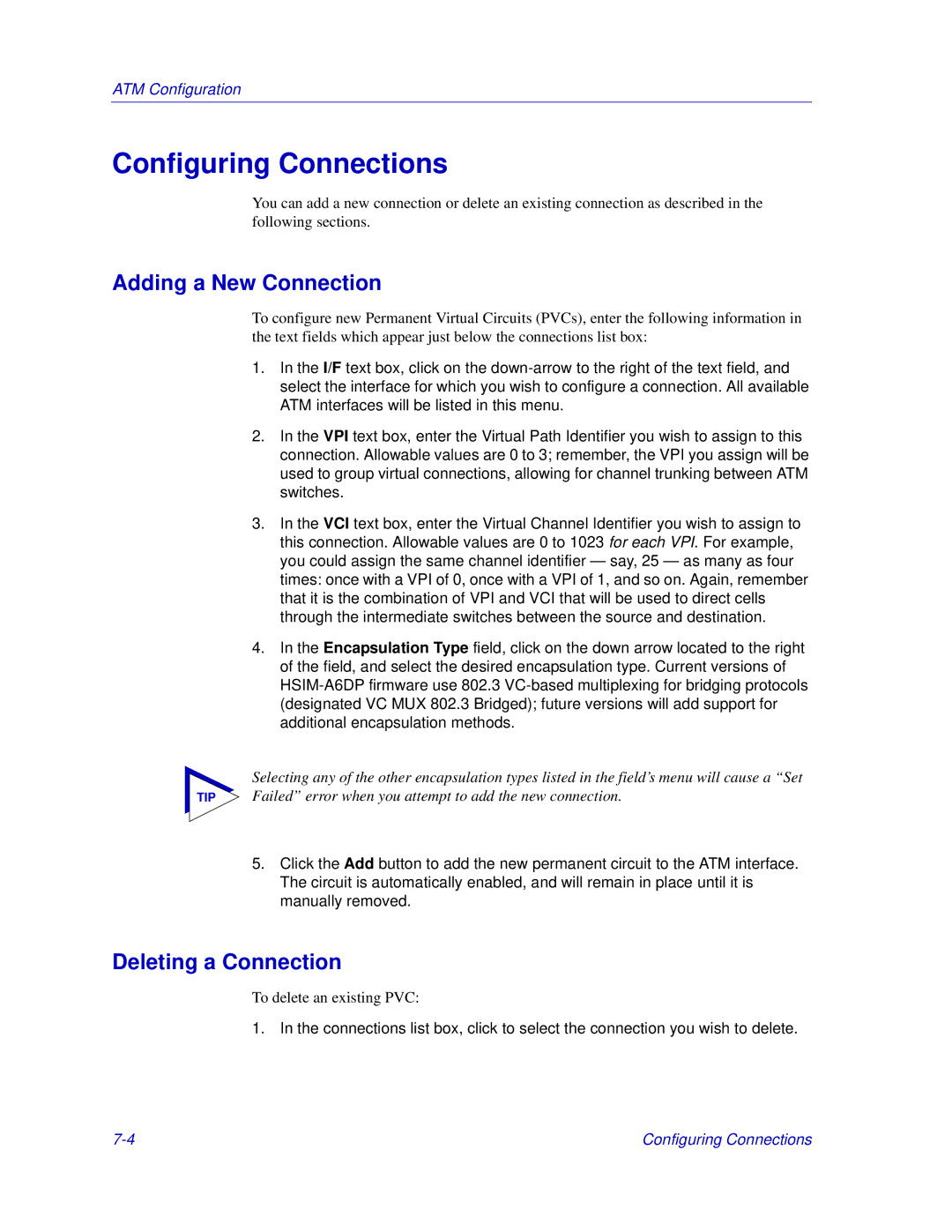
ATM Configuration
Configuring Connections
You can add a new connection or delete an existing connection as described in the following sections.
Adding a New Connection
To configure new Permanent Virtual Circuits (PVCs), enter the following information in the text fields which appear just below the connections list box:
1.In the I/F text box, click on the
2.In the VPI text box, enter the Virtual Path Identifier you wish to assign to this connection. Allowable values are 0 to 3; remember, the VPI you assign will be used to group virtual connections, allowing for channel trunking between ATM switches.
3.In the VCI text box, enter the Virtual Channel Identifier you wish to assign to this connection. Allowable values are 0 to 1023 for each VPI. For example, you could assign the same channel identifier — say, 25 — as many as four times: once with a VPI of 0, once with a VPI of 1, and so on. Again, remember that it is the combination of VPI and VCI that will be used to direct cells through the intermediate switches between the source and destination.
4.In the Encapsulation Type field, click on the down arrow located to the right of the field, and select the desired encapsulation type. Current versions of
Selecting any of the other encapsulation types listed in the field’s menu will cause a “Set
TIP Failed” error when you attempt to add the new connection.
5.Click the Add button to add the new permanent circuit to the ATM interface. The circuit is automatically enabled, and will remain in place until it is manually removed.
Deleting a Connection
To delete an existing PVC:
1. In the connections list box, click to select the connection you wish to delete.
Configuring Connections |
